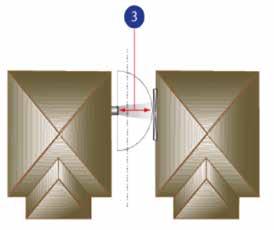
2 minute read
Boiler chimney/flue locations and terminations
Many flue installations that don’t comply with the standards and regulations result in an unhappy customer or disgruntled neighbour. Gas Safe Register’s Technical Team set out the factors that must be considered when locating a boiler/chimney and its termination point.
When considering the installation of a new or replacement chimney/flue, you should examine the site thoroughly to prevent issues arising in the future. Similarly, when assessing an existing installation, you should do the same to ensure the safety of the installation and the customer, and to make sure that it’s in accordance with current standards and regulations.
You’ve probably encountered many flue installations that don’t meet the current installation criteria, generally resulting in an unhappy customer and/or neighbours. The majority of these situations could have been avoided if there had been more careful planning at the outset.
The chimney/flue route and its termination ensure that the products of combustion are discharged safely. We know that many an existing installation’s chimney/flue does not comply with current standards and regulations, which means that the current location is not suitable for a new boiler installation.
Check the rules
To start, it’s essential to make sure that when the installation is complete it will be in accordance with all the current editions of the relevant documents (see Guidance and Regulations on the next page).
BS 5440-1:2008 states: “The chimney outlet shall not be obstructed. Any obstructions such as TV ariels, small wind turbines mounted on the chimney stack or nearby and above the chimney outlet and trees shall be removed or the chimney outlet sited elsewhere.”
The main function of the chimney for both room-sealed, and non room-sealed appliances is to remove the products of combustion and effectively discharge them to the outside air under all weather conditions. This is achieved by choosing the correct terminal and location.
The openings in these terminals are sized so as to prevent the ingress of foreign matter that could seriously impair the flue performance. Under certain conditions, pluming can occur at the flue outlet and so its installation in an area where this could cause a nuisance should be avoided.

When surveying a site for a potential new installation or when working on an existing installation, look for issues that could be problematic now or in the future. These could include lightwells, car ports, property boundaries and vertical flue installations that may end up close to windows. Don’t forget about Velux windows: if the proposed chimney/flue route is vertical, it would be good practice to discuss the possibility of future Velux windows with the property owner, as a later alteration could prove costly.
Light wells
It’s best to avoid light wells as a location for a new chimney/flue and to find an alternative location. However, if you cannot find an alternative, refer to BS 54401:2008 for guidance on installation in a lightwell. Please remember that this location must also be permitted by and in accordance with the manufacturer’s installation instructions.





